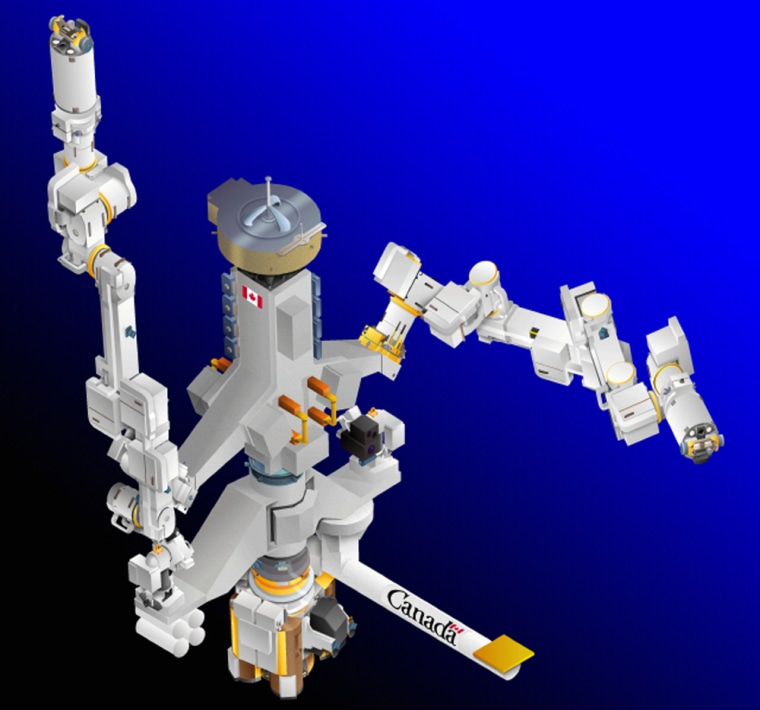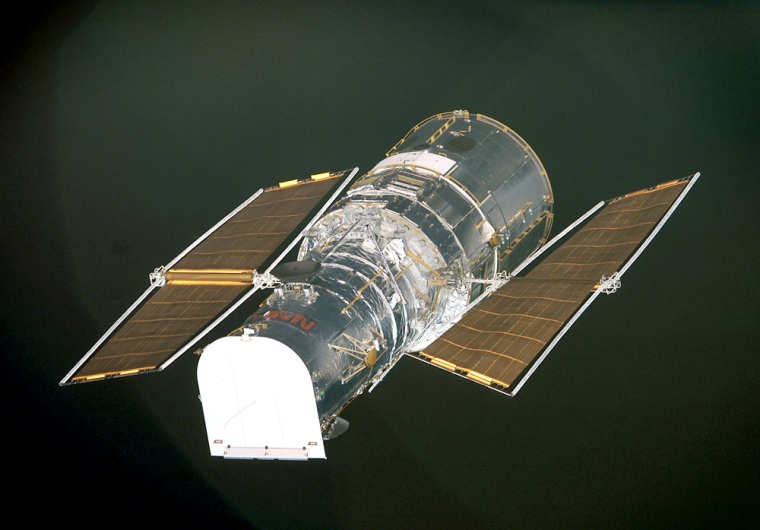NASA said Tuesday it is moving ahead with plans to send a robot to the rescue of the aging Hubble Space Telescope.
The leading candidate is a clunky contraption named Dextre that bears little resemblance to movie-inspired visions of a robot.
A final decision won’t be made until next summer on whether to launch the two-armed Dextre — short for dexterous — or any other robot to Hubble’s rescue in 3½ years. But already, it looks as though the Canadian Space Agency’s robot could accomplish most if not everything that spacewalking astronauts were meant to do. Dextre was originally designed for handiwork at the international space station.
Normally, astronauts would work on Hubble, and there are many hurdles to relying on robots to fix all that ails the 14-year-old telescope.
Months ago NASA’s chief, Sean O’Keefe, nixed an astronaut mission because of safety concerns with space shuttles since the Columbia disaster.
It appeared the Hubble would be doomed, unable to send back more of its dramatic pictures in a few years. But a groundswell of support from astronomers and scientists opened the door to considering robots.
Now, after months of engineering analysis, robots are clearly the space agency’s favored approach.
'Let's go save the Hubble'
On Monday, O’Keefe gave his strongest endorsement yet of a robotic mission, praising the preliminary work done by Hubble scientists and engineers at Goddard Space Flight Center in Greenbelt, Md., and urging them to press ahead with fix-it plans minus astronauts.
“Everybody says, ’We want to save the Hubble’ — well, let’s go save the Hubble,” O’Keefe said in an interview with the Orlando Sentinel.
O’Keefe plans to ask Congress for money to accomplish the job. He estimates it will take about $1 billion to $1.6 billion to develop and launch a robot to make the needed upgrades to keep the popular observatory running and to get it out of orbit once its work is through.
The promise of Dextre
Of all the robots that have been proposed for saving Hubble, including NASA’s own humanoid Robonaut, Dextre holds the most promise for being ready on time, said Al Diaz, NASA’s science mission boss.

“As it turns out, we haven’t found any tasks that I would characterize as being outside the capability range of the robot that we have planned,” Diaz said in a news briefing. “Now I think, though, you have to take into consideration the risk that’s associated with doing those tasks.”
Dextre could open and close the doors of Hubble to get at science instruments, for example, and use tools to install a slew of new parts, Diaz said. But some of the doors on the 14-year-old telescope could be warped; one was misaligned and difficult for an astronaut to close a full decade ago.
“What we need to do now is look at the full mission and understand what the risks are that are associated with each of the tasks that we want to do, and then what our fallback positions are,” Diaz said.
He said the guiding principle is, “Do no harm.”
What needs to be done?
Among the most pressing tasks: installing fresh batteries and new gyroscopes to keep it stabilized and replacing two science instruments with more advanced cameras. Engineers are just now looking at whether a robot could fix a 7-year-old spectrograph on Hubble that shut down last week.
The goal is to give Hubble five years of life beyond any repair mission. Without help, the on-board batteries will probably be the first to go, in 2007 or 2008.
If Dextre is, indeed, picked for the job, it’s uncertain whether the one already built for space station use would be sent to Hubble or whether a replica would be fashioned. The robot is supposed to be launched to the space station in 2007, to supplement the Canadian-built robotic arm already there and to handle the more adroit chores.
